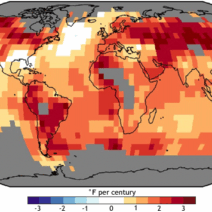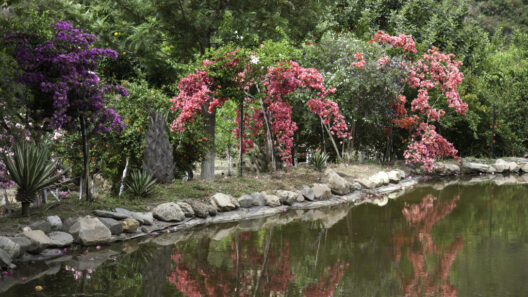In the grand tapestry of Earth’s climate, Nigeria occupies a unique thread—a vibrant and intricate weave of ecological diversity shaped by its geographical position straddling the equator. This latitude bestows upon it a mélange of climatic conditions, each region boasting its own distinctive charm and characteristics. Understanding the climate in Nigeria is akin to unraveling a multifaceted gemstone, each facet reflecting a different hue of meteorological phenomena.
To appreciate the complexity of Nigeria’s climate, one must first grasp the fundamentals—the nation experiences three predominant climatic zones: the tropical savanna, the humid tropical, and the arid regions. The interplay of the Atlantic Ocean, the Sahara Desert to the north, and the gentle caress of the tropical winds all sculpt the atmospheric conditions of this West African nation. In essence, the climate of Nigeria is a pulsating rhythm, with each region resonating at a different frequency, creating a harmonious yet diverse climatic symphony.
The northern territories of Nigeria, where the desert looms, present a stark contrast to the lush south. Here, the climate is influenced by the dry harmattan winds which sweep in from the Sahara, creating arid conditions characterized by long spells of drought and high temperatures. This region experiences a vivid seasonal cycle where towering, sun-baked landscapes shift into a parched tableau, challenging the resilience of its inhabitants. This climate is likened to a stern mentor, teaching lessons of survival, adaptation, and the relentless passage of time.
The humid tropical zone, nestled in the southern part of Nigeria, is the epitome of verdant abundance. This climatic realm revels in the embrace of two distinct wet seasons and a short dry season, allowing for rich biodiversity to flourish. The lush rainforests and fertile lands are a testament to the life-giving rains that cascade upon this region, often leading to dramatic weather patterns. This excess of moisture transforms the climate into a nurturing mother, bestowing life upon flora and fauna alike but equally reminding humanity of nature’s formidable power through its tempestuous storms and flooding.
As one navigates the varied landscapes of Nigeria, from sandy dunes to verdant rainforests, the striking contrasts in climate become palpable. This juxtaposition is encapsulated in the undulating topography, where rolling hills blend seamlessly into sprawling plains. Each region’s climate not only influences the ecosystem but also shapes the very fabric of local cultures—agricultural practices, traditions, and lifestyles are intrinsically linked to their climatic realities.
One cannot discuss climate without mentioning the grand cycle of seasons that permeate Nigeria’s psyche. The rainy season, a masterpiece painted by the heavens, rejuvenates the biomes, allowing crops to flourish. It is during these times that farmers engage in a dance with nature, sowing seeds that promise sustenance for future generations. Conversely, the dry season poses challenges, often leading to droughts, thus stirring an urgent call for resilience and sustainable practices among local communities.
Moreover, the interconnection between climate and human activity invites a stringent focus on environmental stewardship. Human-induced climate change looms ominously over Nigeria, manifesting in the form of erratic weather patterns, desertification, and flooding that disrupt established routines. The balance of this delicate ecosystem is threatened, akin to a tightrope walker precariously inching forward, where each step must be calibrated to avert disaster. It stirs an urgent call for collective action, underscoring the necessity of embracing green technologies and sustainable practices that harmonize with the existing climatic conditions.
Hydropower potential serves as a beacon of hope in this arena. Nigeria’s climatic variety offers ample opportunities to harness the energy of its rivers and rainfall, which—if developed sustainably—can be a linchpin in reducing reliance on fossil fuels. Just as the rivers carve their paths through the land, so too can sustainable energy initiatives pave the way for an ecologically sound future, illuminating paths towards economic growth and environmental preservation.
The environmental narrative in Nigeria, however, is not solely concerned with challenges. It is equally a story of resilience and innovation. Local communities are increasingly leveraging their indigenous knowledge and practices in sustainable agriculture, forestry, and water management. This novel approach reflects an alignment with the rhythms of nature, recognizing that nurturing the land is tantamount to nurturing future generations.
As the sun casts its golden hue across the landscapes of Nigeria, one can observe not only the life that thrives in diverse climates but also the potential for synergy between humanity and nature. The ultimate quest for balance is ongoing. It is a narrative of adaptation and foresight, with the promise of a climate-conscious future anchoring aspirations for generations to come.
In conclusion, the climate of Nigeria is an intricate mosaic defined by its equatorial location and regional variety. Each climatic zone offers a unique narrative, creating an interplay between nature and the human experience. This ongoing dialogue emphasizes the necessity for sustainable development that respects the intricacies of its climate, ensuring that future generations can continue to thrive amidst the vibrant landscapes of this remarkable nation.








